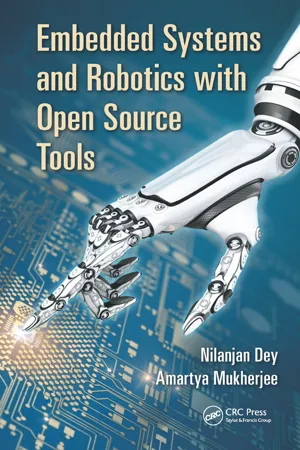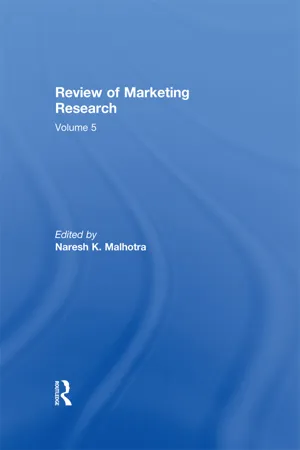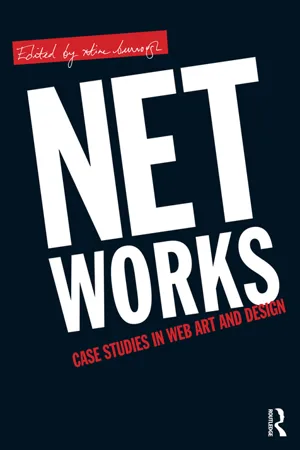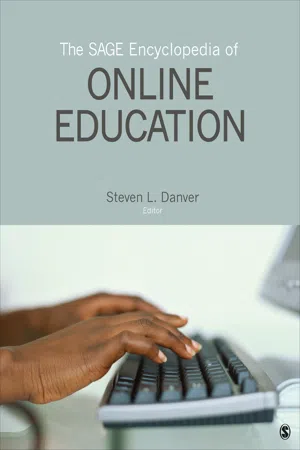Open Source Software
Open source software refers to computer programs whose source code is made available to the public for use, modification, and distribution. This approach allows for collaborative development and encourages transparency and community involvement. Open source software is often free to use and is governed by licenses that ensure the code remains open and accessible.
8 Key excerpts on "Open Source Software"
- Nilanjan Dey, Amartya Mukherjee(Authors)
- 2018(Publication Date)
- CRC Press(Publisher)
...code 2. To use the source code uninterruptedly without any access restriction 3. To redistribute the source code 4. To improve the source code and derogatorily publish the modified version of the software The Open Source Initiative and Open Source Definition are the two standard communities that are recognized globally as certifying authorities, but there are many that authorize open-source licensing. Creative Commons and GNU Public License are the most widely used free software licenses. However, the legal and commercial overhead for managing open-source licensing is significantly reduced due to this flexibility. The term free has a dual meaning for the open-source community—primarily it means “zero price” and secondarily the liberty of use. 6.2.2 Free and Open-Source Software The free and open-source software (FOSS) programs have a license that allows the users to freely run the software components for modification, development and research, education, and commercial use, with allowable free software distribution. One vital cause for growth of the FOSS community is that the user has complete access to the software code that allows the repair of flaws/fault of the software. FOSS does not have to be free of charge, besides being able to construct business models around the software based on commercial aspects. A company can receive direct payment by using a large number of licensing schemes and models. These models can be included in the overall definition of what we mean by FOSS. Thus, the source code is available to the customer. 6.3 Examples of Open-Source Software Products A large variety of open-source software products are available online. Sites such as SourceForge provide users with the ability to get and deploy open-source software products. Nearly 70,000 categories of software are available; a few popular software products are as follows: • Linux : This is probably the most well-known open-source software in the current era...
- eBook - ePub
- Nikki Cordell, Sam De Silva, Sara Ellacott, Victoria Hordern, Stewart James, Andrew Katz, Andy Lucas, Jennifer Pierce, Stuart Smith, Jeremy Holt, Jeremy Newton, Jeremy Holt, Jeremy Newton(Authors)
- 2020(Publication Date)
- BCS, The Chartered Institute for IT(Publisher)
...10 Open Source Software Andrew Katz and Michaela MacDonald INTRODUCTION Open Source Software is software that is made available under a form of licence that ensures any recipient is free to use, modify and distribute it. Over the last 30 years, and despite early fears that using open source would expose organisations to vulnerabilities and claims for intellectual property infringement, Open Source Software has become mainstream and now makes up the majority of the software currently being created around the world. It provides the operating system for computers of all sizes, from mobile phones to laptops to games consoles and smart home gadgets, right through to supercomputers. The leading technology platform companies of the moment – Apple, Amazon, Facebook, Google and Microsoft – all make significant use of Open Source Software. The French tax system and Transport for London’s Oyster Card system rely on it. This chapter explains what ‘Open Source Software’ is, how and why it developed as a business model, and the principal types of open source licence that IT managers are likely to come across. WHAT IS OPEN SOURCE? ‘Source code’ is software’s blueprint. A programmer writes source code in a computer language, which more-or-less resembles instructions in English, and then uses software tools (compilers and linkers) to generate object code from the source. Source code is the form of software created by humans; object code is the form of software run by computers. However, the distinction is becoming blurred as many modern programming languages (such as JavaScript and Python) run the source code directly, although the version run by the computer has had comments and other attributes helpful to the programmer stripped out. For this reason, it is often better to refer to the source code as ‘the preferred form of the code for making modifications’. Traditional (proprietary) software is supplied solely as object code...
- eBook - ePub
Review of Marketing Research
Volume 5
- Naresh Malhotra, Naresh Malhotra(Authors)
- 2017(Publication Date)
- Routledge(Publisher)
...The term originated in computer programming, where the Open Source Software movement is largely comprised of highly skilled professional developers with a commitment to the philosophy of “open source code” (David, Waterman, and Arora 2003). These developers collaborate over the Internet, generally voluntarily developing software during their own spare time. In the software industry, the open source development approach has produced reliable, high-quality products quickly and inexpensively (e.g., “Business” 2001). From its humble beginnings among a few dedicated programmers, the Open Source Software movement has now grown to over 100,000 projects and 1 million registered users (a count as of May 2006 from sourceforge.net, the largest repository of open source projects on the Internet). For example, Open Source Software is pervasive in the web server domain, with Apache leading the way in having the largest market share (almost 65 percent, according Netcraft’s Web Server survey as of May 2006), and the Linux operating system is emerging as a strong contender in the desktop category. High-profile successes like these have piqued the imagination of the business world since the open source approach promises that high-quality products can be produced in a relatively short period of time, at very little cost, by some of the best developers in the industry (e.g., O’Reilly 1999; Goetz 2003; Krishnamurthy 2003). The term “open source” is now used more broadly to characterize situations that have similar philosophical underpinnings to Open Source Software. For example, a group of students at the IT-University in Copenhagen have created Vores Øl (Our Beer) as an open source beer. According to their website (www.voresoel.dk), The recipe and the whole brand of Our Beer is published under a Creative Commons license, which basically means that anyone can use our recipe to brew the beer or to create a derivative of our recipe...
- eBook - ePub
Net Works
Case Studies in Web Art and Design
- xtine burrough(Author)
- 2012(Publication Date)
- Routledge(Publisher)
...This focus on openness and collaboration stems from the means of production itself: Firefox is collectively written through input and contributions from a community of open-source developers. No company owns the code, and anyone is free to use it as long as they continue to share the code. Open source is a term used to refer to computer software where the source code can be viewed, modified, and used by anyone. 13 The source code contains the modifiable, human readable instructions that are compiled into an un-modifiable computer readable binary code. As the story goes, once upon a time all software was open source. In 1980 MIT researcher Richard Stallman was using one of the first laser printers. Printing took so long that he decided he would modify the printer driver so that it sent a notice to the user when her print job was finished. Unlike previous printer drivers, this software only came in its compiled version. Stallman asked Xerox for the source code. Xerox would not let him have the source code. Stallman became upset and wrote the manifesto that led to the statement that Free Software was “Free as in speech, not free as in beer,” and the Free Software movement began. 14 Later, Eric Raymond published The Cathedral and the Bazaar which popularized the term “open source.” The term is frequently referred to by the acronym FLOSS, which stands for Free/Libre/Open Source Software. 15 The Real Costs is an open-source project. You can view the source code at https://github.com/mandiberg/The-Real-Costs. By working within an open-source model, I signal my desire to share my work, and accept contributions from others. Others have joined my project by submitting “patches” which are rewrites of sections of code that fix bugs or add features...
- Scott McLeod, Chris Lehmann, Scott McLeod, Chris Lehmann(Authors)
- 2011(Publication Date)
- Jossey-Bass(Publisher)
...If you’re not Amish, you probably already are a daily user of Open Source Software, either directly or indirectly. Free and Open Source Software has been around a long time. It is integral to the pace of innovation and growth in the Internet economy and its influence and importance continues to grow. Open source is not a trend or a fad or an idealistic flight of fancy; it is not going away and it should be part of a school’s or district’s long-term technology strategy. WHAT IS FREE AND Open Source Software? The terms free software and Open Source Software represent different ways to look at the same phenomenon. Functionally, both perspectives share a consistent core definition as described in this case by the free software definition: Free software is a matter of the users’ freedom to run, copy, distribute, study, change and improve the software. More precisely, it means that the program’s users have the four essential freedoms, as described in the Free Software Definition: The freedom to run the program, for any purpose (freedom 0). The freedom to study how the program works, and change it to make it do what you wish (freedom 1). The freedom to redistribute copies so you can help your neighbor (freedom 2). The freedom to distribute copies of your modified versions to others (freedom 3). By doing this you can give the whole community a chance to benefit from your changes. (GNU Operating System, 2011) Software distributed under licenses that meet these conditions is free software; software that does not meet those terms is not...
- eBook - ePub
Hacking
Digital Media and Technological Determinism
- Tim Jordan(Author)
- 2013(Publication Date)
- Polity(Publisher)
...While Gates’ success at Microsoft might seem to confirm his view, he was quite wrong both in relation to his assertion that software must be treated as a particular kind of property and his claim that no-one would put years of work into writing and releasing professional quality software for free. The contradiction is the Free Software/Open Source movement. Free Software/Open Source (FOSS) programming is based on an entirely different conception of the relationship between property and commerce to those the young Bill Gates argued were necessary. Later in this chapter, I will explore the complexities of this in detail, however at an introductory level we need to know that Free Software/Open Source 1 software is freely available; freedom here means that the programmes often need not be paid for but more importantly and fundamentally that the code that constitutes the software can be taken and adjusted for free as long as any changes made to the code are, in turn, made available to anyone else to use or adjust. It is important to note that as long as these latter conditions are met then FOSS code can be sold. Working year after working year has been poured into FOSS software producing operating systems like Linux, server software like Apache, fundamental Internet tools such as BIND, graphics programmes like GIMP or web browsers like Firefox. These software systems also play central roles, particularly in the backrooms that run the Internet. For example, Apache server software is used on around 60 per cent of all computers running web-servers, with its closest rival Microsoft claiming around 30 per cent (Netcraft 2007). The email systems Sendmail and Qmail subscribe, broadly, to Open Source and between them are likely to account for 80 per cent of email traffic (Bernstein 2003) 2. The GNU Compiler has been for years the ‘standard’ compiler for many programmers...
- eBook - ePub
Virtual Learning Environments
Using, Choosing and Developing your VLE
- Martin Weller(Author)
- 2007(Publication Date)
- Routledge(Publisher)
...This is also reflected in the semantics that surrounds the two approaches. For instance, ask yourself what seems more appealing – community or company, gift culture or profit, shared or protected, altruism or greed? This is somewhat simplistic, but nevertheless the open source approach is surrounded by language and terminology that feels more comfortable and appealing, particularly to the higher education community. One of the common fears, or misconceptions, about the open source approach is that the more mundane work will not be performed, since the developers are not paid for their contributions and recognition is the main reward. This might suggest that more exciting features would be of interest, while the more routine parts would be left unattended. This does not turn out to be the case, for instance Jorgensen (2001: 334) surveyed the contributors to the FreeBSD operating system and found that the ‘project organizes a huge effort which is mainly of a maintenance-oriented nature. An approach likely to have contributed to a successful allocation of manpower to a type of work that might be perceived as boring or low status is the integration of bugfixing with new development.’ Indeed Jorgensen suggests that the contrary may be true, and that the structure of the open source community (in this case at least) is best suited to this type of work, stating that the ‘project’s life cycle for changes may be, at least, insufficient as the basis for organizing work on complex new features’ (Jorgensen 2001: 335). Open source licensing The critical distinguishing feature of open source development is that the entire source code of a project is vested in the public domain. The subsequent use of the publicly vested code is bound by licence. The Free Software Foundation (2003) website provides a useful discussion of the range of these licences. The most common open-source licence is the Free Software Foundation’s own General Public License from the Gnu project (GNU 1991)...
- eBook - ePub
- Steven L. Danver(Author)
- 2016(Publication Date)
- SAGE Publications, Inc(Publisher)
...However, from the perspectives of the law and business, it is a bit more complicated. Litigation involving the violation of intellectual property can be time-consuming and may result in damage to an organization’s reputation, so any online education provider seeking to benefit from the use of open source teaching tools needs to develop some expertise in their appropriate selection and use. In addition, open source materials may vary in their state of development and quality, and the rule of caveat emptor applies even when the price of use is nothing at all. Legal Aspects Although similar in definition, what people refer to as “open source” is not identical to what people refer to as “free,” whether one refers to software or other forms of intellectual property. For open source content (particularly software), the recognized authority is the Open Source Initiative (OSI). For free software, the recognized authority is the Free Software Foundation (FSF). However, the licenses that the owners of the intellectual property of interest offer to prospective users of that content generally satisfy both camps, as the categories of “free” and “open source” software are nearly synonymous. However, OSI approval of software generally requires that users have access to the underlying source code for any software, with freedom to adapt and modify it; for FSF approval, it is generally sufficient that the software simply be available free of charge. Licenses for Limited Use The open source license is critical to the success of open source software and materials. Specifically, it allows interested parties to use, modify, and distribute software and other content. To be classified as open source, at least by consensus definitions, licenses must usually permit free use as well as allow access to any underlying (source) code required to modify the software...







